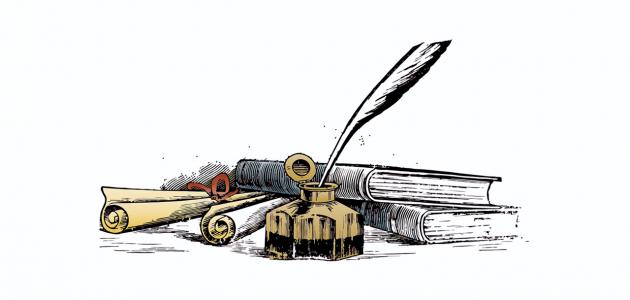the message
The message is one of the literary arts that the Arabs knew in ancient times, and it means conveying specific information in a specific style, through a specific means that develops with the development of time. The message was transmitted through merchants, and through carrier pigeons, and sometimes fires were lit on the top of the mountains to indicate sending... A short message. Mail was even created during the reign of Muawiyah bin Sufyan. Then the process of transmitting the message developed in the nineteenth and twentieth centuries, with the development of means of transportation and the development of technology. The fax machine appeared and then the e-mail. This encouraged people more to send messages in a greater way, regardless of Regardless of the type of message, whether it is personal or official.
Message elements
The message has many elements that must be taken into account when preparing the message, so that the message fulfills its content without omitting anything that may be important and have an impact on the recipient of the message. The most important elements that make up the message are the following:
- Geographical address: The first element of the message, without which the message will not reach its owner, especially if it is sent via regular mail and not e-mail, where the address is written in the upper right corner of the message.
- The person the message is sent to (addressee)His name, position name, or title must be mentioned in a way that shows great respect for him.
- The sending person: He is the person who carries the idea or information and wants to convey it to others in the best way. The name of the sender of the message must be written in full, so that there is no ambiguity or confusion in the name of the sender.
- Greetings: Which is considered the opening of the letter, the greeting contains a greeting and some kind words.
- Title: The title of the letter is not written in all letters, but rather it is limited to the official letter that needs clarification.
- Introduction to the message: Where a brief and general topic of the message is presented in the introduction, especially if the subject of the message is official, the main idea that the message contains must be presented and introduced.
- Message SubjectIt is the most important part of the message elements, as it is the one that carries the subject itself and the main idea for which the message was written. For this reason, this part of the parts should be taken care of when starting to write the message, so that the idea is conveyed completely and clearly through this message.
- Conclusion of the messageIt is the part through which the content of the message is well summarized. If there is a request behind this message, this request should be mentioned at the end of the message, or the recommendations should be stated politely and gently, and the writer should stay away from the imperative form.
- SignatureIt is the element with which the message is concluded. It is at the bottom of the message, and the signature is in the name of the sender of the message.
- Recording historyThe date on which the message was sent must be recorded, and the location of the date may vary from one message to another depending on the type of message and the method in which it was sent. Sometimes the date is at the top or bottom of the message, and in many cases the date is with the stamp.
Message types
Common types of messages include the following:
Read also:Ahlam Mosteghanemi forgetfulness- formal letterThis message is exchanged between different countries, and it may be called the customs message in some countries, or between ministries, official bodies and companies in the same country. The characteristics of the official message are different from the rest of the messages. Most of the time it may be confidential and written in a scientific style and in a clear and sequential manner. About ambiguity and feelings, while choosing literary words that suit the addressee, and trying not to be as long as possible.
- A personal or social messageThis message is exchanged between people and friends in a natural, spontaneous manner, and does not carry any official character, such as congratulations and condolences on occasions, or to express certain feelings, or a message carrying advice and reproach, or a message of thanks, and it must be in a clear, simple, and understandable language.
- Literary messageThis message is a type of artistic literature by writers and poets, which they send to express a specific incident or situation.
- Commercial messageThis message is exchanged between commercial establishments with the aim of facilitating trade matters between them. Its content differs from other types of messages.
- The willThis message is unusual and unusual, but it can be considered a type of personal message.
The importance of the message
The need to transmit words and ideas between people has appeared since the beginning of humanity in different ways, which differed according to time and place. For example, the effects of ancient civilizations that we see now are historical messages that contain within them many messages, ideas and lessons. Likewise, the divine messengers that were sent down from the Lord of Heaven carry the same idea. The message, which is the need to communicate a specific idea to specific people at a specific time.
Read also:How to learn to write thoughtsThe importance of the message lies in the need to convey information accurately on which making a decision or expressing a specific thing depends. It is an art of human communication, and when the message is delivered to the person to whom it is addressed in an artistic and technical way, the rate of understanding and access to the information and knowledge is greater, and thus the desired goal is achieved. The message is taking an appropriate reaction to the type of message that achieves the desired communication.









